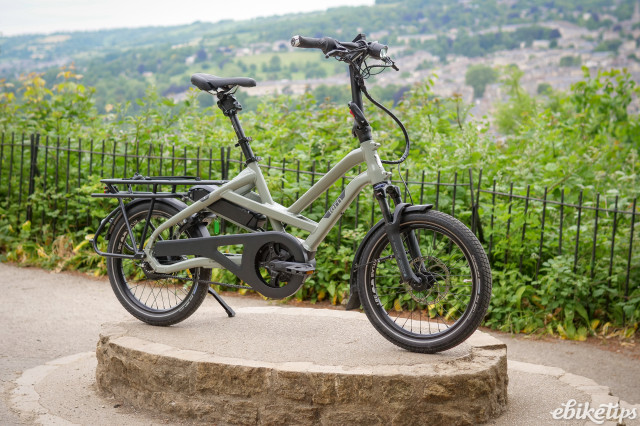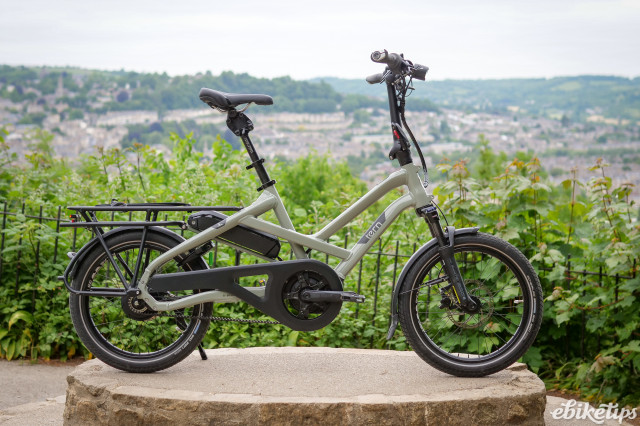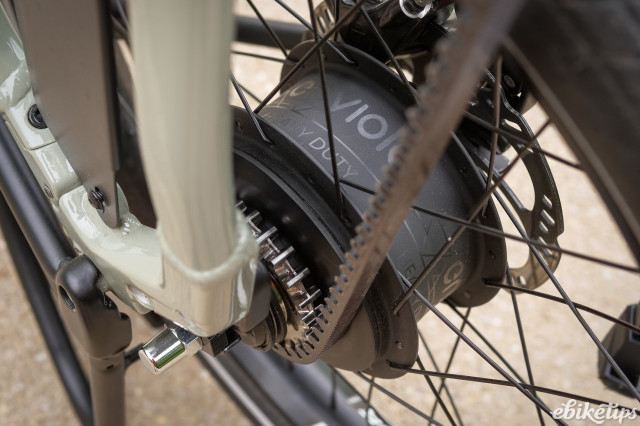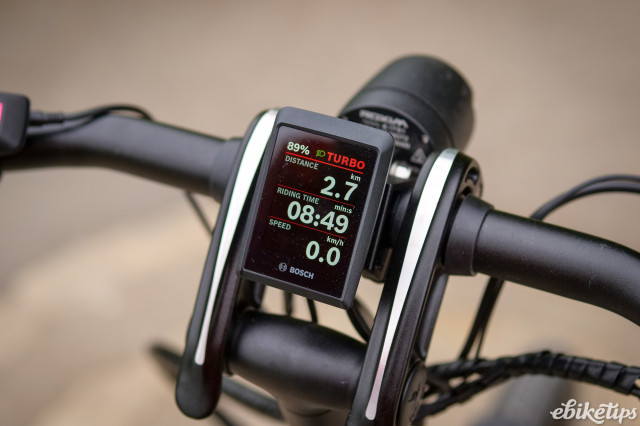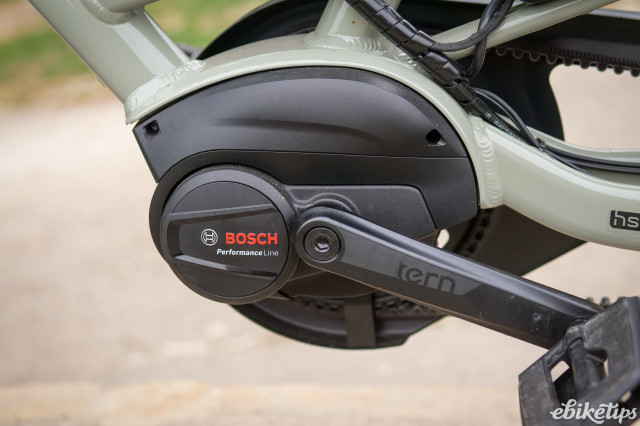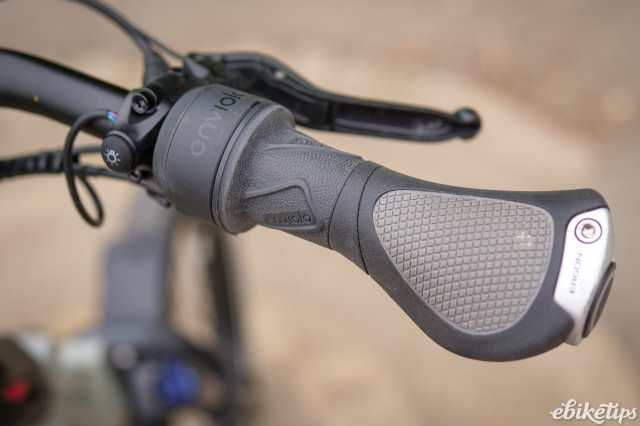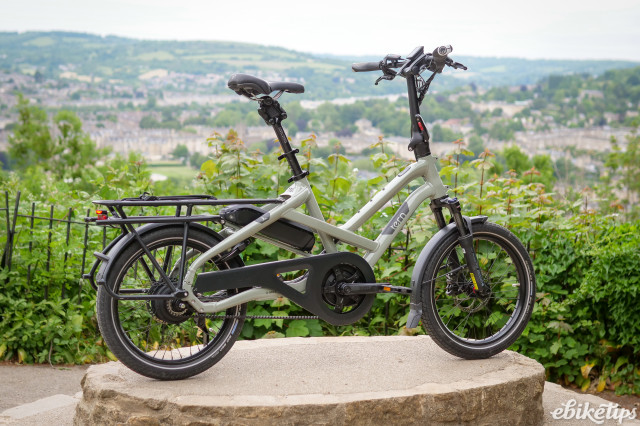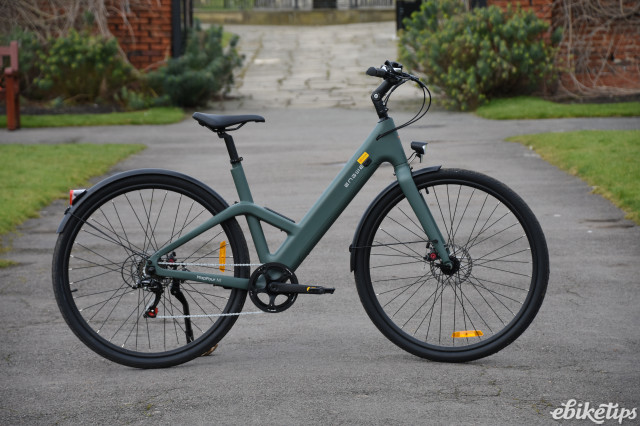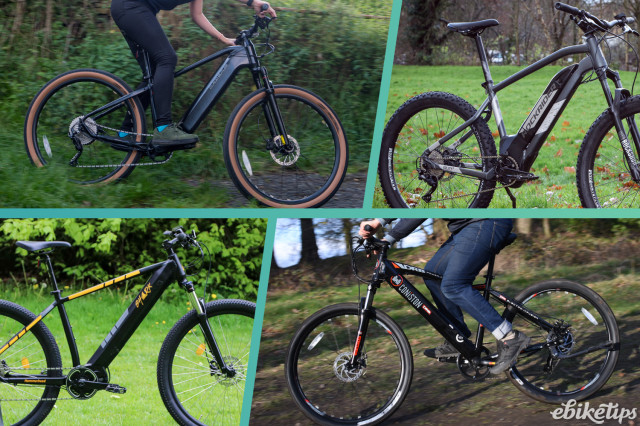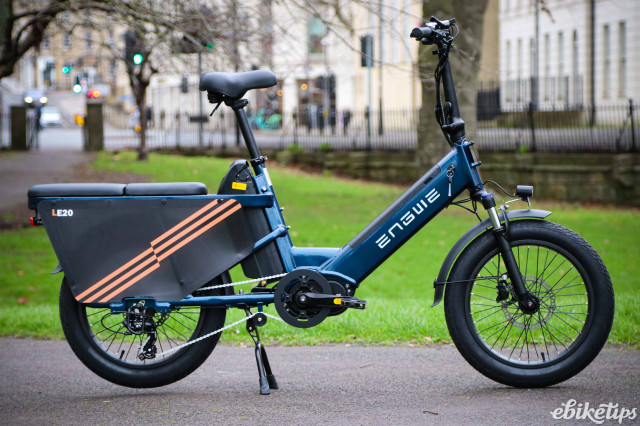Today Tern Bicycle has launched its new and updated HSD, and it has lent us one of the bikes for review, the S00 model which will retail in the UK for £5,200. It’s much too early for the review as yet – we’ve only had it a few days – but I can give you some first ride impressions of the bike, and talk through the changes. So I will.
Tern HSD - the history up until now
A little bit of history first. Tern released the HSD in 2019 and we got our first ride of that bike in September of that year at the Eurobike show. After the roaring success of the Tern GSD – still my favourite ebike ever – the HSD was designed as a smaller, more compact sibling with a bit less capacity, at a lower price. Really it was somewhere between a cargo bike and a city bike, big enough to carry lots of stuff but easier to handle and store than the mighty GSD. Our review of the HSD was published later that year. And we liked it. It’s a great platform, and Tern’s unrivalled range of accessories for carrying basically anything means that you can adapt it perfectly to the riding and carrying that you do.
Things move on, though. Specifically, the Tern Quick Haul (above) came along. Our review of the Quick Haul went up last year, and that bike brought much of the capability of the HSD to a significantly lower price point, leaving us thinking: what’s really the point of the HSD now? Tern was obviously thinking much the same thing. So the HSD has had a bit of a makeover, the long and short of which is that it’s now a much beefier bike and sits squarely in the gap between the GSD and Quick Haul to make the Tern range a much more even spread.
Tern HSD Gen 2 - what's changed?
So, what’s changed? Well, a quick glance at the the old HSD…
And then the new HSD…
Reveals that although they’re the same shape, there are some significant changes. There’s more metal in the new frame, and most obviously the cross member that the down tube attaches to now extends all the way to the rear of the frame and the seatstays, with a welded plate in the junction much like the GSD. That’s one of the reasons that the new bike is capable of taking much bigger loads: the rear rack is now rated at 80kg instead of 60kg, which means you can take even quite large adults on the back. Although, sadly, not adults as large as me. Anyway, if you want to know all about the new bike then you should head over to our news article about the Tern HSD Gen 2 launch. Here I’ll concentrate on my first impressions of the bike.
Our S00 model bike is the most expensive of the three models available at launch, and it has a Gates CDX belt with an Enviolo heavy duty CVT hub at the rear. The motor is a Bosch Performance Line unit, and you get Bosch’s smart system with a Kiox display and remote, which you can pair to the Bosch ebike flow app.
Tern HSD Gen 2: What's it like to ride?
I’m coming to the new HSD after spending a lot of time on a derailleur-equipped GSD S10, the bike that I use every day for shopping/moving kids about/going to the office/pretty much anything else in town. Unrivalled as it might be as a thing-mover, the GSD is definitely a bit of a tank, and in fact “The Tank” is what friends ask for when they’re looking to borrow it. The HSD is… well, more like a bike. It’s lighter, the Performance Line motor is much quieter than the Cargo Line motor on the GSD, and it generally feels a bit less conspicuous. It’s not obviously a cargo bike, especially in the bare build that I have for review; once you start putting child tents or dog carriers or second adult seats on the back, maybe less so. Overall it feels more agile, and the extra structure that Tern has added to give the extra carrying capacity hasn’t really dulled the ride characteristics noticeably. It’s a pleasant bike to ride. I’m 1.89m, so nearing the 1.95m limit for the bike, but it doesn’t feel small underneath me, and i’ve lent it out to much smaller members of the family who are also very happy with the ride position, which is super easy to adjust between riders.
All the HSD models get a custom-designed 20” Suntour fork at the front, which is good: it’s stiff enough to not affect cornering and it doesn’t dive too much under braking, while all the while giving a pretty effective level of bump-taming over rough roads. Our S00 build also comes with a Cane Creek Thudbuster seatpost, which is a tried-and-tested bit of kit that’s a genuine benefit for keeping you comfortable on longer rides.
The Schwalbe Big Ben tyres are dependable and offer good grip and puncture resistance. You get full mudguards for the wet, and full lighting for the dark with a dedicated control button. The rear light on S models also has a braking function thanks to sensors on the Magura levers. The single-piston brakes are fine but noticeably less powerful than the big dual-piston MT7 brakes on the GSD. That’s not an issue when you’re rolling around on the bare bike but it might be less than ideal heading down a steep hill with an 80kg human on the back. We’ll see.
On the GSD I’m used to the Purion display, which most of the time tells me how fast I’m going, and how many battery bars I have left, and that’s basically your lot. So it’s a bit of a revelation to have the Bosch Smart System. Goodness me, there’s so much you can see and do. Once you’ve paired your smartphone to the bike you can have a bit of a play around with the assistance modes to make them suit your riding. You can change the power, the attack (how aggressively the power kicks in) and the assistance limit.
On the Kiox there are multiple screens of data easily accessible from the remote, giving you speed, power, range, altitude, cadence, calories burned… the list goes on and on. You can also disable the motor with the ebike lock, using your smartphone as a key. You get a fully granular battery readout in 1% increments, as well as an easy-to-read dual-colour battery display on the remote in 10% blocks. The ebike flow app and the Kiox can also combine to give you turn-by-turn navigation to get you where you’re going, and the Kiox automatically records your ride data which can be synced via the app to Strava or komoot.
Bosch’s Performance Line motor is great, as ever. It doesn’t have quite the oomph of the Cargo Line unit but it’s almost silent, and plenty powerful enough for even steep hills. The S00 bike comes with the newer 545Wh PowerPack battery which will increase the range. When it comes to charging, the new bike has an easy-access charge port on the top tube, which is a definite bonus and much better than scrabbling around in the frame trying to find the one on the battery mount.
As I’ve said previously, there are three builds of the HSD at launch (a fourth is also mooted). If it was my money this probably wouldn’t be the one I’d choose, because although I can see the benefits of the Enviolo/Gates transmission in terms of longevity, cleanliness and service intervals, I just don’t like using it as much as other systems.
The twist control needs a really firm grip to change under power – even for me, a big man with hands like spades – and the hub just feels a little bit vague. It’s not especially efficient either, meaning that range is impacted. I’d probably opt for the 5-speed Nexus hub of the P5i (£4,400), or the derailleur-equipped S10 (£4,100). Although on both of those, I’d really miss the Kiox display and the Thudbuster seatpost. Especially the Kiox.
This is a first ride, so there’s lots I don’t know. As of now I don’t have any accessories, so I can’t load the bike up and see how it performs. I’m looking to get hold of the Captain’s Chair (for big passengers) and a pair of the Cargo Hold 37 panniers for the weekly shop. And I have a Transporteur rack and Weathertop bag on the GSD that I can switch over; the HSD uses the same front mount standard. I’ll report back for a full review when I’ve used the bike to its full potential.
